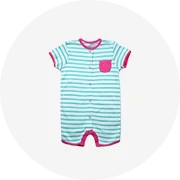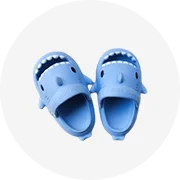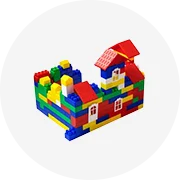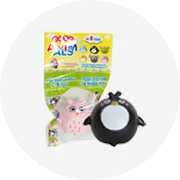Types of RC Bus for Sale
There is more than one kind of RC bus for sale. Each has its own unique characteristics and appeal, which is why miniature bus enthusiasts and collectors often have difficulty choosing just one model for their collection.
City Tour Bus
The RC city tour bus authentically replicates real urban transit vehicles with its distinctive boxy shape, straight lines, and large windows. These models are perfect for creative city play scenarios where children can design miniature urban environments complete with roads, traffic infrastructure, and buildings.
Key features: Forward/backward controls, opening doors, working lights, and realistic sound effects that enhance the immersive play experience.
Double Decker Bus
With its iconic two-level design, the double-decker RC bus remains highly popular among both children and serious collectors. These detailed replicas often model famous real-world vehicles like the London Bus, making them excellent educational toys for teaching about public transportation systems.
Key features: Wide turning radius, multi-directional controls, working stairs, opening roofs, sound functions, and flashing lights that activate during movement.
School Bus
Modeled after the classic American yellow school bus, these RC vehicles feature a distinctive rectangular shape with rounded corners and bright yellow coloration that immediately captures attention. The school bus design encourages imaginative play centered around school-related activities.
Key features: User-friendly control system with intuitive directional functionality, realistic honking sounds, flashing safety lights, and detailed interior with spacious seating.
Luxury Coach Bus
The luxury coach RC bus simulates high-end intercity transit vehicles designed for long-distance travel. These models showcase premium detailing with spacious interiors, reclining seats, luggage compartments, and even miniature restrooms in some premium versions.
Key features: Beginner-friendly controls, meticulously detailed dashboard, working lights, authentic sound effects, and smooth handling for indoor driving.
Collector's Tip: Many RC bus enthusiasts start with one category but eventually expand their collections to include multiple types. Consider beginning with a model that most appeals to your interest in public transportation history or design aesthetic.
| Bus Type | Best For | Play Value | Collector Appeal |
|---|---|---|---|
| City Tour Bus | Urban planning play | High (versatile usage) | Medium |
| Double Decker | Public transport enthusiasts | High (unique design) | Very High |
| School Bus | School-related play | Medium | Medium |
| Luxury Coach | Long-distance travel simulation | Medium | High |
How to Choose an RC Bus
Selecting the right RC bus requires careful consideration of multiple factors, whether you're a consumer looking for a quality toy or a business owner stocking inventory. This comprehensive selection guide will help you make an informed purchase decision.
Quality Considerations
To stand out in the competitive RC vehicle market, focus on high-quality models with distinctive features. Look for excellent build quality utilizing premium materials that ensure durability against typical play wear and tear. Carefully inspect the wheels, steering mechanisms, and moving components to verify robust construction quality.
Size & Scale Factors
RC buses come in various scale ratios, including 1:10, 1:12, 1:24, and 1:28. Your selection should reflect your target market's preferences:
- Larger scales (1:10, 1:12): Offer more detailed interiors and easier control for younger users
- Smaller scales (1:24, 1:28): Provide greater portability and typically faster operation
Power & Battery Systems
Consider the power source carefully:
- Rechargeable models: Higher initial cost but more economical long-term
- Disposable battery models: Lower upfront price but higher ongoing expense
Prioritize models with extended battery life (multiple hours of play) and rapid recharge capabilities.
Business Owner Advisory: When sourcing RC buses for retail, balance quality with price point. High-quality models command premium prices but require proper market positioning. Consider your target demographic's purchasing power and willingness to invest in higher-end RC vehicles.
Key Selection Criteria for Businesses
For retailers and distributors, additional factors affect inventory selection:
| Selection Factor | Importance | Considerations |
|---|---|---|
| Price Point | Critical | Compare competitive models while ensuring sustainable profit margins |
| Bulk Purchasing | High | Seek manufacturers offering volume discounts to improve margins |
| Minimum Order Quantity | Medium-High | Find suppliers with flexible MOQs that align with business scale |
| Material Quality | High | Prioritize durable construction that withstands regular use |
| Special Features | Medium | Seek models with unique selling points (lights, sounds, detailed interiors) |
Functions, Features and Design of RC Bus for Sale
Modern RC buses incorporate numerous features that enhance realism and play value. Understanding these elements helps consumers and retailers identify high-quality products worth the investment.
Design & Construction
RC buses range from miniature models to substantial replicas, constructed from various materials including high-grade plastics, metal components, or hybrid compositions. Authentic design elements like proportional windows, functional doors, realistic wheels, and detailed driver cabins contribute to the model's appeal and value.
Control Systems
Contemporary RC buses utilize advanced radio frequency technology allowing operators to control the vehicle from significant distances. Premium models feature proportional steering for nuanced directional control and multi-channel systems enabling simultaneous function operation.
Multimedia Effects
Enhanced play experience comes from integrated light and sound systems:
- LED headlights, taillights, turn signals and interior illumination
- Authentic engine sounds, horn effects, door chimes, and announcements
- Synchronized audio-visual effects that activate during specific operations
Interior Detailing
Premium RC buses feature meticulously crafted interiors with realistic elements:
- Accurately scaled seating arrangements
- Detailed driver consoles with miniature controls
- Passenger amenities reflecting the specific bus type
Technical Specifications
| Feature | Standard Models | Premium Models |
|---|---|---|
| Power Source | AA/AAA disposable batteries | Rechargeable lithium-ion with USB charging |
| Control Range | 15-30 feet | 50+ feet with enhanced signal stability |
| Scale Options | Typically 1:24 or smaller | Range from 1:10 to 1:24 with greater detail |
| Operating Time | 15-30 minutes | 45-120 minutes with power management |
| Recharge Time | 60-90 minutes | 30-60 minutes with fast-charge technology |
Performance Tip: For optimal RC bus operation, maintain clean wheels and gears by regularly removing dust and debris. This simple maintenance routine significantly extends the vehicle's operational lifespan and ensures smoother performance.
Safety and Quality of RC Bus for Sale
Safety Features
Safety remains paramount when selecting RC buses, particularly those intended for younger users. Reputable manufacturers incorporate numerous safety elements to protect consumers:
Material Safety
High-quality RC buses utilize non-toxic materials certified for child safety. These materials undergo rigorous testing to ensure they contain no harmful chemicals or substances that could pose health risks even with prolonged contact.
Physical Design Safety
Thoughtful engineering includes rounded edges and smooth corners that minimize injury risk during active play. Premium models eliminate sharp protrusions and potential pinch points in moving components.
Electrical Safety
Secure battery compartments with childproof mechanisms prevent accidental access to power components. Quality models include internal circuit protection against overcharging, short circuits, and thermal overload.
Compliance Certification
Reputable RC buses display safety certifications from recognized authorities:
- ASTM (American Society for Testing and Materials)
- EN71 (European Safety Standard for Toys)
- CPC (Consumer Product Certification)
Safety Warning: Always verify age recommendations when purchasing RC buses. Models designed for collectors or older children may contain small parts that present choking hazards for younger users under 3 years of age.
Quality Indicators
Beyond safety considerations, several quality metrics differentiate premium RC buses from basic models:
| Quality Factor | Economy Models | Premium Models |
|---|---|---|
| Construction Durability | Basic impact resistance | Reinforced chassis with shock absorption |
| Design Detail | Simplified exterior with basic features | Precise scale reproduction with authentic markings |
| Control Responsiveness | Standard directional control | Proportional steering with precise movement |
| Audio-Visual Features | Basic sound effects | Multi-channel sounds with synchronized lighting |
| Battery Performance | 15-30 minute operation | Extended runtime with power management |
Frequently Asked Questions
RC buses vary in size based on their scale ratio and the specific vehicle they replicate. Common scales range from 1:10 (larger) to 1:50 (smaller) or beyond. For perspective, a 1:10 scale model typically measures approximately 12 inches in length, while a 1:50 scale model would be considerably smaller. The scale directly correlates to size—larger scale ratios (smaller numbers) produce bigger models with enhanced detail, while smaller scales (larger numbers) create more compact, portable versions.
Modern RC buses incorporate various materials selected for specific performance characteristics:
- Body construction: High-impact plastic, die-cast metal, or composite materials
- Chassis components: Reinforced plastic or metal alloys for structural integrity
- Wheels/tires: Rubber or synthetic compounds for traction and durability
- Electronic elements: Circuit boards, wiring, motors, and battery systems
Premium models typically feature higher-grade materials that enhance both aesthetic appeal and functional durability.
RC bus speed varies significantly based on several factors including size, motor type, power source, and design purpose. Typical speed ranges are:
- Standard models: 5-10 mph (8-16 km/h)
- Performance models: 10-20 mph (16-32 km/h)
Scale plays a significant role in perceived speed—smaller buses appear to move faster relative to their size. Battery-powered models generally offer more consistent performance than disposable battery versions, especially as power levels decrease during operation.
Yes, many RC buses are designed for outdoor operation, though capabilities vary by model:
- All-terrain models: Feature reinforced chassis, larger wheels, and enhanced ground clearance for uneven surfaces
- Weather-resistant versions: Incorporate sealed electronics and water-resistant components for operation in light moisture conditions
- Enhanced transmission systems: Provide improved torque and control for navigating outdoor terrain
When selecting an RC bus for outdoor use, verify the manufacturer's specifications regarding terrain compatibility and weather resistance. Most premium outdoor models offer extended control range (50+ feet) to accommodate larger operating areas.

































































